What is in a song? Over the years, certain songs have influenced and had a major cultural and political impact on societies and served as catalysts that brought widespread change and defined historic moments. Kenya has its fair share of songs that helped define its national image and introduced the Kenyan sound to a global audience.
The Kenyan hall of fame contains Fadhili Williams, Malaika, Daudi Kabaka’s Harambee, Harambee, Them Mushrooms, “Jambo Bwana, Ayub Ogada’s Koth Biro and Eric Wanaina’s “Nchi ya Kitu Kidogo”. They were songs associated with patriotism, a new identity, safe to some degree even as they pushed musical talent to new heights but in 1997, 20 years ago, one song emerged that would radically change Kenya’s urban music scene forever.
In 1997, Kenya was in transformational stage from an authoritarian one party system to the democratic multi party. President Moi had won in 1992 in the first multi-party elections with KANU and by 1997, the political tension was palpable with the threat of a country degenerating into civil strife.
The country was in state of rage, at the misdeeds of Moi’s leadership, the selfish interests of the disunited opposition and the unforgiving social conditions. Police brutality was common. Corruption, a way of life. AIDS and HIV was ravaging through households nationwide and the future looked thoroughly bleak for young people.
In the youth spaces, a restless energy was bubbling. Talent searches were common, amplified by the rise of local TV stations, FM radio and entertainment magazines but the music was largely a poor imitation of American R N B and hip hop.
It was against this background that a little known hip hop group rose from obscurity to energize the youthful musical scene toying with defiance.
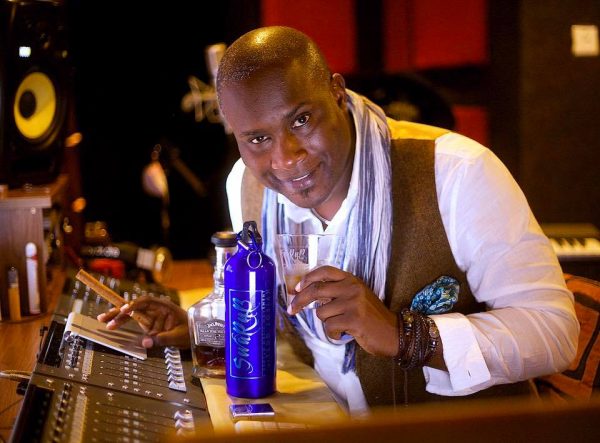
Tedd Josiah
One music producer who had emerged from the nascent gospel scene started to experiment with a different kind of sound. His name was Ted Josiah and he started feeling a stirring of possibility whilst working with a new Kenyan artiste, Ngunjiri Maina, who went by the stage name Hardstone. Hardstone’s hit single Uhiki which Ted produced was ground breaking with Kikuyu lyrics that were remixed to Marvin Gaye’s “Sexual Healing” sound track. The public had been yearning for something contemporary but grounded in the local identity.
Ted Josiah was a musician himself from the group Hart, with Pete Odera and Sally Oyugi, the pioneers of contemporary Kenyan gospel music. He ventured into production to spread his wings and discovered that he had a knack for it. The quest for a different kind of artiste led him to the Florida 2000 discotheque for the Star Search where he bumped into a trio of hip hop artistes from Dandora who called themselves 3 D, later famously known as Kalamashaka.
They were three scruffy boys with a gritty sound and big dreams. Kama (Kamau Ngigi), Roba, the Oteraw ( Robert Mtumbai) and Johnny Vigeti. They already had three singles in English and they had a rugged style that sounded like American hip hop group, Lost Boyz, recalls Ted.
Ciro Githunguri who managed a later offshoot of Kalamashaka known as Ukoo Fulani-Mau Mau remembers K-Shaka as a bunch of shy guys from Dandora city, a sprawling and congested neighbourhood, in Nairobi’s marginalised Eastlands.
“They had talent and they were not even aware of it”. Kama was a charismatic old soul, deeply conscious with a Pan African leaning. Roba was an introvert, the intellectual and at the time doing a degree at Kenyatta University. Johnny Vigeti, had sensitive temperament, a voracious reader and perhaps the most lyrically gifted of the trio.
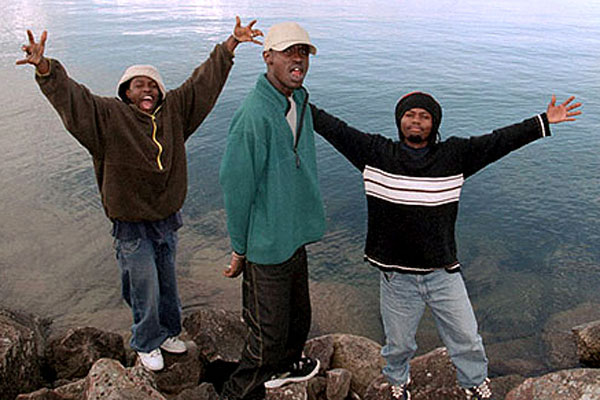
Ted Josiah agreed to produce them at Sync Sound studios and started dragging them to shows as curtain raisers for Hardstone. Despite their zeal, Kalamashaka was not clicking with the audience. They would do their three tracks in English and then leave the stage for Hardstone. The crowd was not connecting with their music.
Ted was frustrated. He knew the elements that made Kalamashaka unique. They were from the inner cities, the ghettos. They had a revolutionary message of hope. They were talking about the harsh realities of the urban grind that youth all over the country faced. But people did not understand them.
It would take a concert in Kisumu in December of 1996 for Ted to find the missing piece of the puzzle.
Kalamashaka had accompanied Hardstone for a concert in Kisumu where they got booed off stage. Kama did not take it well and broke down. “Kama was so passionate about hip hop but they were just attracting hostile crowds”. Here was Hardstone in Kisumu singing in Kikuyu and the Luo audience were lapping it up. The success of Hardstone had brought home the realisation that Kenyans did not want to hear hip hop or any urban music with English on it. Something had to change.
“One day I was walking down the road in South B when the light bulb came on”.
Ted grappled with the Kiswahili word for understanding and landed on “Tafsiri hii”. Translate this!
It was his eureka moment. “All we needed to do was to make people understand, Tafsiri Hii, maisha kule D”.
That evening Ted could not sleep and he stayed up working on some beats. The next morning, he met up with Kalamashaka in the studio and he sat them down. “We are going to something radical. Here is the way I understand you guys, stop thinking in English for a moment and start thinking in sheng”. Kama and Roba were hesitant but Johnny got it immediately and that is why Johnny’s voice is so prominent in the chorus.
“Tafsiri hii,Maisha kule D, ni mazi”,
“Ingawa tuko chini bado tuna tumaini”
“Skiza kwa makini”
That morning a hit single was born. Kalamashaka’s single would become the cherry on top, that completed Ted Josiah’s Kenya the 1st chapter compilation album. The other artiste on the album were Jimmi Gathu, In Tu, Nikki (Sheila Mwanyigha), Maina Kageni and Tedd Josiah (The Ebony Affair), the gospel group Hart (featuring Pete Odera and Sally Oyugi) and Ugandan star, Kawesa.
Bob Kioko of Capital FM, Nairobi’s leading radio station known for its rock music, was the first radio deejay to play it on air during his evening show, Hits Not Homework. He unwrapped the CD on air opened it up, put it on the player and pressed play. His reaction was one of absolute shock and he hit the pause button and exclaimed, “Wait! Wait!” verse one had not been completed and he pressed rewind.
Kenyan Hip Hop struck oil in 1997. Before Kalamashaka, there was Jimmi Gathu with Matatu driver, George King, Ted Josiah and Maina Kageni who rapped in English but until then, no rap song in an urban dialect had received nationwide and regional critical acclaim.
Kalamashaka went on to produce two other hit songs, Songa Hapa, a witty collaboration with Nikki and Niokoe’ that was a poignant reflection on the state of nation and the trauma and violence young men faced in Kenya. The songs dominated the top 3 spots on the East African charts for six straight months. By the end of the same year, they were headlining the Benson and Hedges, “Golden Tones” concert, the biggest music festival at the time. Benson and Hedges would take Kalamashaka to Lagos in Nigeria where they performed for an audience of 80,000 people.
Kenyan hip hop had truly arrived.
The rest is history. The influence of Tafsiri Hii was far reaching. It was the song that cemented the place of sheng and Swahili rap as the voice of the urban youth all over Kenya.
While Kalamashaka were the first group hip hop group to hit it big, they were not the first to use Kiswahili-centric rap. DJ David Muriithi who was Ted Josiah partner at Sync Sound and one time manager of Kalamashaka credits MC Mikey as the true pioneer of Kenyan hip hop.
K-Shaka drew inspiration from across the southern Kenyan border. There was hip hop artiste known as 2 Proud from Tanzania or Mr.2, and a group called Kwanza Unit, who became the first artistes to infuse Swahili poetry into their verses. It was their earlier genius that would challenge the likes of Ted who realised that they get artistes to think deeper and weave poetic verses in local dialect in their songs.
The emergence of Kalamashaka shook off the lethargy in the industry. A new cast of local talent emerged with ferocity. Ted Josiah, was not going to ride this wave alone. Bruce Odhiambo would introduce Poxi Presha his seismic Dholuo rap, K-South duo of Bamboo and Doobiez aka Abbas Kubaff and Mercy Myra. Ted would return the following year with Ndarling P, the very popular Gidi Gidi and Maji maji with hit song “Ting Badi Malo”.
Lucas of Ogopa DJs unleashed from their stable, the gifted E-Sir, Nameless, Big Pin, Mr Googz and Vinnie Baton. All around Nairobi, a new movement hip hop artistes were proudly representing their hoods. From Dandora, Kariobangi, Kayole, Githuria and California estate, a hip hop colony arose.
Kalamashaka went on to create Ukoo Fulani Mau Mau camp, a collective that brought together hip artistes from Nairobi, Mombasa and Tanzania among them Wenyeji, pioneers Kalamashaka, MC Kah, Wakamba Wawili, Grongi and Eastlandos. Even star gospel hip hop artiste Juliani first cut his teeth here. They would in turn influence the more dance hall oriented and laid back Genge vibe whose godfathers were Jua Cali and Nonini.
Tafsiri Hii was more than a song, it was a game changer. The socially conscious music captured the frustrations of an entire generation of young people locked away in urban ghetto squalor. It embodied their aspirations of escaping poverty to seek a better life despite being born on the wrong side of town.
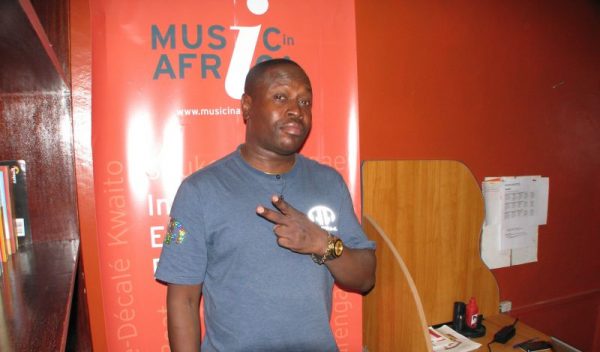
Fundi Frank (Courtesy Music in Africa)
Kalamashaka influenced the urban fashion scene with their military and revolutionary street wear that drew its inspiration from the Mau Mau Freedom fighters. Their main designer Fundi Frank would launch his brand off the back of their success and grow into Kenya’s first celebrity tailor. Incidentally, Fundi Frank was a rapper turned fashion designer who earned his name as a budding MC with a Swahili hip-hop group called Wachungu Weusi years before Kalamashaka gained prominence.
Tafsiri Hii placed sheng on the map as the language of the youth and created a bridge between the classes. The youth from Eastlands who were held back by an invisible class line were invited uptown where they mingled with the middle class head, bobbing to the raw poetry of Kalamashaka.
Kalamashaka would mainstream sheng as savvy advertisers scrambled to ride on their influence over the youth demographic. Kalamshaka were behind an award winning advert by PSI organization, in 1999. After the Benson and Hedges, “Golden Tones” concert in 1998, UNFPA (United Nations Population Fund) Nigeria enrolled Kalamashaka, to deliver the message of Adolescent Health issues in a creative poetic manner that had a viral effect.
They created the title song, “I need to know” and guest starred in a TV series. The famous tag line “Uki Freak bila soks, no digidi ume trip” was the first time sheng had been used in a high budget advertising campaign. The campaign’s impact was powerful and got a mention in the international Newsweek magazine.
Kalamashaka were rebels with a cause and even their hairstyle was revolutionary. They wore dreadlocks when the hairstyle represented criminality. Their hair challenged the status quo and represented the rebellious spirit of the Mau Mau freedom fighters that they channeled through their music.
A decade later, Kalamashaka would be eaten up by the monster of fame. Their decline was compounded by their own personal problems as the music industry interests shifted and they found themselves isolated and stereotyped as radicals. They made many unsuccessful attempts to replicate their earlier successes to no avail.
Kama moved to the US when he now lives with his wife and child. Roba was derailed by an alcoholic addiction and Johnny Vigeti who released a new album Mr. Vigeti in 2016 produced by Ken Ring, despite having run ins with the law and spend some time in drug rehab battling substance addiction.
Fame has its own demons and Kalamashaka for all their hopes and dreams could not out run the dark side of their celebrity lives and pitfalls of urban survival that they sought to explain 20 years ago, in that famous song “Tafsiri Hii”.
Their impact and influence lives on. Long Live, KALAMASHAKA!
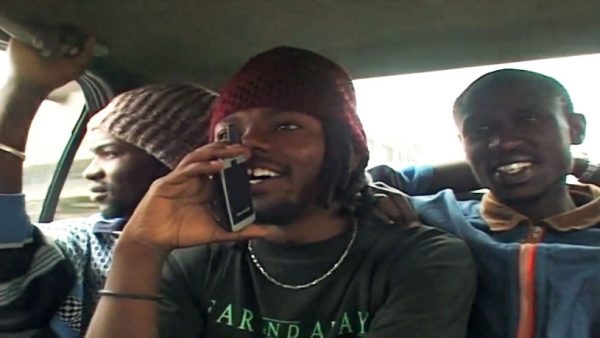
Correction: After speaking to Kamau Ngigi, Kama, he pointed one inaccurate fact. Kalamashaka were rapping in sheng long before they met Tedd. “We were finalist in the 1996 where we met Tedd ,we started Kiswahili /sheng Hiphop back in 1995 in Florida jam session ,otherwise always respected your writing”.


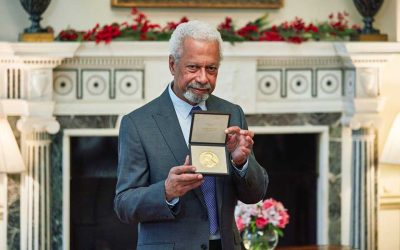



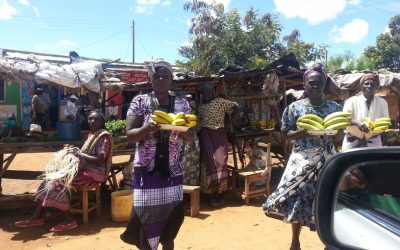

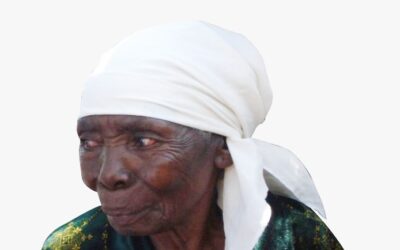



Wow….. I thought I knew so much about Kenyan music. Thanks for the deep dive and info.
Informative and well articulated. Great, incisive and precise. Another great article from an exemplary writer. Well in!
Thank you
…. Tafsiri hii. Nostalgia!!!
I grew up in the 90s, in Eastlands, I had a lot of problems with my dad because all I ever did was play kalamashaka. Interestingly, I still have their albums and still listen to them. Legends, I say.
Oyunga Pala you have just mentioned Tafsiri hii to be the fire, but I am not saying its not true but if it was my power I would have just rated the whole Kalamashaka album KILIO CHA HAKI to be the one true rock bottom albums ever in the entire hip hop culture.
I agree, they just got better. My point here was the influence of Tafsiri Hii and its butterfly effect. It set off a tsunami and Kenyan urban music changed forever after it. Basically, it was the first and I pay tribute to the guys who made it happen.
Kilio Cha Haki wasn’t a Kalamashaka album. It was the first ever Ukoo Flani Mau Mau album. To be specific. .. Mau Mau collective without the Ukoo Flani. K’Shaka have had two albums. Ni Wakati and Mwisho Wa Mwanzo released in late 2014 but recorded between 2007 and 2010. The last one even features M1 of Dead Prez who also carry revolutionary messages that K’Shaka have always preached.
This took me way back! That was a glorious period in Kenyan music
Good article. Although you missed out facts about UKOOFLANI. And before Tafsiri Hii we had A group in Mombasa called ACHON PONG CLAN who were founders of UKOOFLANI.
Oh My Gawd!
Thanks for this man! It’s what is said on that “Hoi” track ya CheezNBrain. First words. Never knew what they meant till now. As so, your comment got to be legit 🙂
An excellent recount of events of an industry that pretty much influenced my career path. Classic Pala of course. I got in just about the time Lucas of Ogopa announced his arrival with the introduction of the Ogopa Deejays stable… I am still trying to translate this, wait, to Tafsiri Hii is more like it…
Message
Yes! A true game changer! On the back of this success, in 2007, I too, collaborated with a group of young performers from Kibera, Huruma, and Mathare, to co-write, produce, direct what might be the first full-length play in sheng. During those weeks creating and performing “GITHAA”, I learned so much!
Yesss! The memories, the lyrics … Ghetto tutatoka bila kupiga watu tisa…
Thanks for this Oyunga Pala!
The NWA of KE Rap
Nilikataa Elimu
Mama yangu alidhani Mimi ni wazimu
These Guys inspired me alot. I remember i used to Rap to the whole track from verse to chorus. Their Album ‘Ni Wakati was off the chains’.
Message
20 years later na bado iyo ngoma inagonga hard ka sijui nini
KENYAN MUSIC IS NOT DEAD
Fairly accurate article. Very well written. My role in relation to their success seems a little muted (as their manager who signed up all the events/contracts you’ve stated) but I get that it’s really about the song’s influence. MC Mikey mentioned here in the article, who was the 1st Kenyan artist I managed, was the first rapper in Sheng who won the Smirnoff Star Search competition in 1996 beating Hardstone, Mercy Myra and Kalamshaka at the time. He now works in Europe as an Engineer and has a PhD in Energy Management. He is rarely credited for this feat. Also Tedd Josiah, Mike Rabar of Homeboyz and I started Audio Vault Studios and Sync Sounds. I just used to manage the artists from sync sounds before we set up our own label. My 2 cents. Tafsiri Hii forever!!!